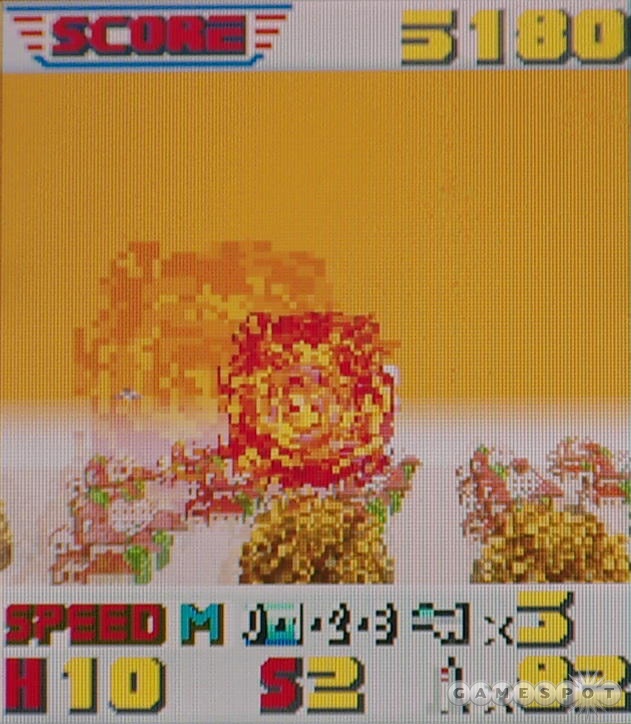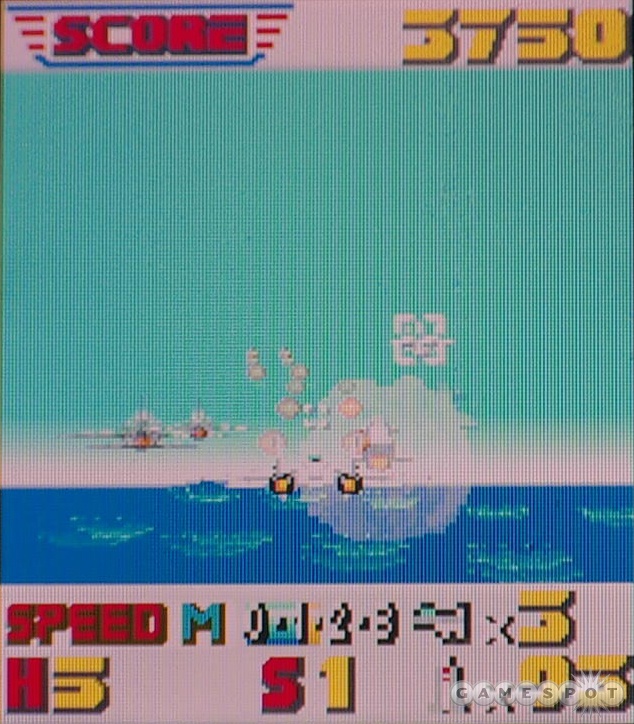While After Burner II is a fairly good port of Sega's classic arcade game, the mobile controls hinder its playability. The original After Burner II was a third-person flight shooter by designer Yu Suzuki, in which you navigated an F-14 Tomcat jet through a number of environments, taking out waves of enemy planes and avoiding their incoming fire. There were several different versions in the arcade, the most spectacular of which was a hydraulic sit-down cabinet that would physically move along with your steering. Even though the arcade flight stick that was present in all of the arcade cabinets largely contributed to the game's popularity, After Burner II was ported to practically every home system at the time, regardless of whether it had a flight stick controller or not. If you're familiar with After Burner II, this version will certainly jog old memories, but they will most likely be bittersweet due to the way it feels on the mobile phone.

For a mobile arcade flight shooter, After Burner II is fairly sound. In the game, you can move in eight directions to steer away from oncoming and trailing enemy aircraft. Your ship automatically fires a basic machine-gun attack, but you can choose when to launch any of your 99 missiles, which are especially effective against distant aircraft. The missiles lock on if you hover over and then remain aimed in the general vicinity of an enemy plane. As with the arcade version, it's often better to simply get out of the way, especially when a single shot from enemy planes will kill you. To the detriment of the original game, you could avoid returning fire and only be punished with a low score. Since this version's 10 continues are a necessity, and your score resets at the use of each one, there's little harm in paying no attention to your score, especially in the beginning, unless you're the most talented of After Burner II fans.
The game moves fairly quickly, and you must navigate accordingly to stay alive. Enemy aircraft will pass you from your rear, come up from ahead, or linger directly behind you. Since staying out of harm's way is crucial, you'll typically spend a lot of time flying from one diagonal to the other or executing a barrel roll in order to dodge the attack. This is exciting enough to make the game worthwhile, especially because it runs at a solid frame rate on the LG VX8000. The smooth frame rate is due in no small way to the minimalist graphics, which haven't changed much in the last 20 years, but the presentation works well regardless. The game switches up the environments at almost every level, most noticeably by changing the time of day. You can opt to listen to either the music or the sound effects during gameplay. The music is by far the better choice, since the theme is quite catchy and subtle, while the sound effect of the launching missile, for example, sounds like a little bell.

Every few levels a ship will restock your missiles, so you'll rarely run out. You can approach the game offensively or defensively, and you'll find that either option is quite challenging, remaining true to the difficulty of the original game. Though After Burner II is translated fairly well, it suffers most at the hands of the control scheme, which loses a lot of value on the scaled-down mobile system. If you're in the market for a mobile flight game, you'll find that this game is one of your best options, but despite looking and running quite a bit like the original, it just doesn't feel exactly like the same game.